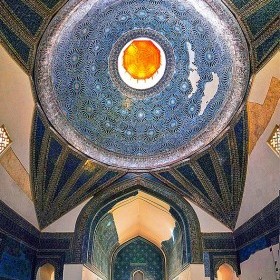KARATAY MADRASA HOSTING EXQUISITE SELJUK TILES
Karatay Madrassa in Konya, was formerly a higher education institution from 13th century, built by a vizier of Sultan Izzeddin Keykavus, namely Celaleddin Karatay, in the outskirts of Alaeddin Hill. The Madrasa is famous for its well advanced decoration scheme as well as its pioneering architectural design. Mosaics of glazed tiles in the Madrasa reflect Sufi mysticism and symbolism.
Thanks to Seljuk's commitment to learning and spreading knowledge, Karatay Madrasa was completed in 1251 in the capital Konya. The architect Muhammed bin Hawlan Al-Dimiski managed to achieve great functionality in a comparatively small space by arranging the units of the edifice around the central enclosure.
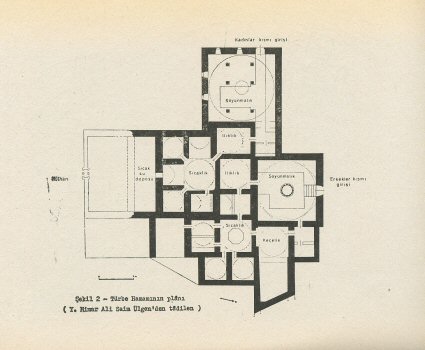
Madrasa continued to function as an educational institute until the beginning of the 20th Century, and as a meeting place of the dervishes during Rumi’s period. In 1955, after the building had fallen into substantial disrepair, it was converted to a museum where Seljuk tiles were displayed. The collection of Karatay Museum was particularly enriched by the findings, collected from Kubadabad Palace on Lake Beyşehir shore in 1970’s.
The building is mostly made of rubble stone while the wall with the gate is made of cut stone. Bricks have been used in the upper sections of the walls, in the dome's zone of transition and in the vaults.
The portal, decorated with interlacing geometric bands of grey and white marble also consists of inscriptions and geometric and floral decoration on the marble. The decoration, with swastika motifs (which are ancient Mesopotamian symbols of the sun) on the panels flanking the portal, attracts great attention.
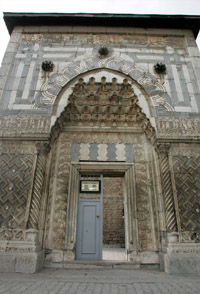
Decorative tiles and tile mosaics enrich the walls of the courtyard, dome, and the main iwan. The remains show that the main iwan and the lower part of the courtyard walls were covered with hexagonal turquoise and dark blue tiles.
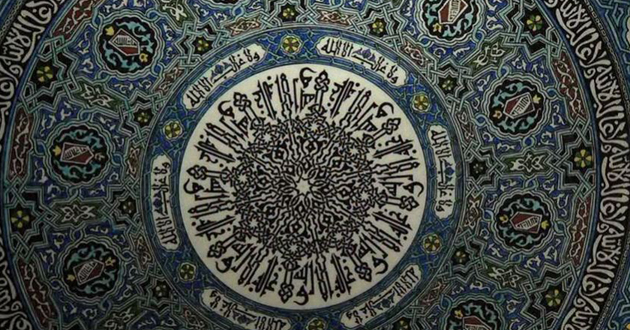
Tile mosaic with inscriptions and floral or geometric motifs can be found on the tympana of the doorways and windows facing the courtyard, the upper part of the walls, the fan-shaped pendentives supporting the courtyard dome, the dome itself and the vault of the iwan. The dome of the winter classroom, featuring unglazed bricks arranged in a herringbone pattern, was converted into a tomb-chamber for Celaleddin Karatay. Blue, black and white mosaics of the dome are arranged in a way to give the impression of bursting stars with a white centre followed by a blue inner ring and a black outer one. The area between these stars was filled with millions of small black dots set in a blue background, to give the impression of the universe.
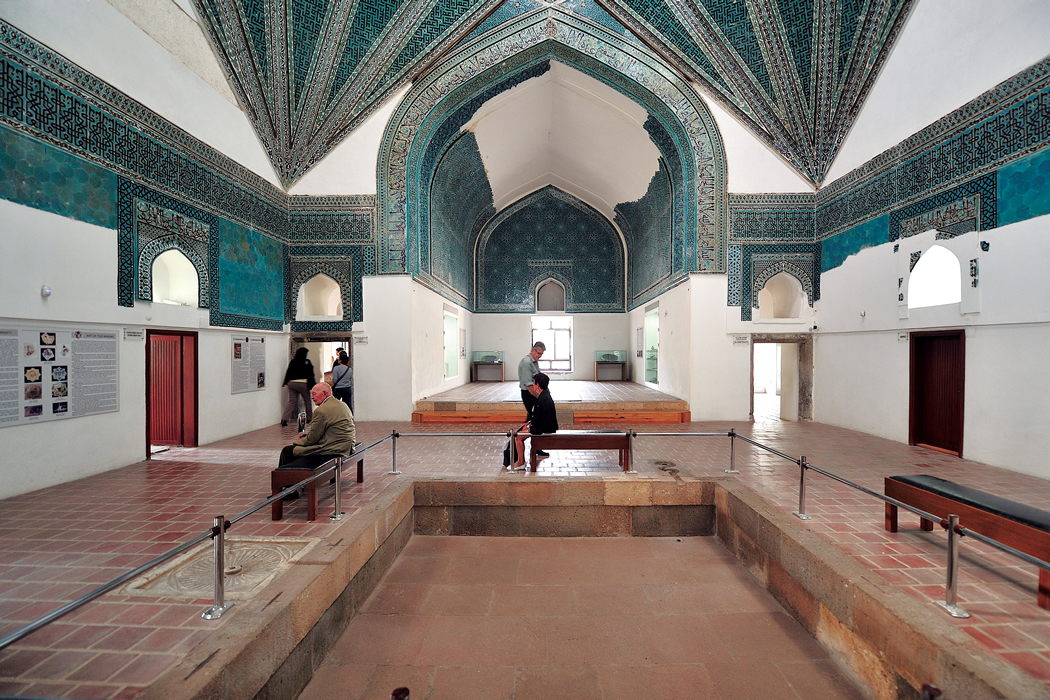
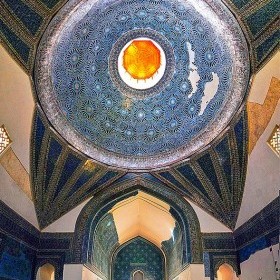
The dome symbolises the sky and the universe, while the pool under the dome symbolises the underground and the walls symbolize the earth. The dome also features a circular band of Kufic calligraphy carved in golden color at the vertical foot of the dome with the famous verse of Ayat Al-Kursi. Pendentives at the corners of the hall recall the names of Prophets Muhammed, Jesus, Moses and possibly Abraham and Noah; the five messengers of Allah.
In addition to the spatial and structural achievements, Karatay Madrasa’s attractive decorative system was repeated in numerous buildings of the Muslim world, being the culmination of the Seljuk art of Anatolia.





















